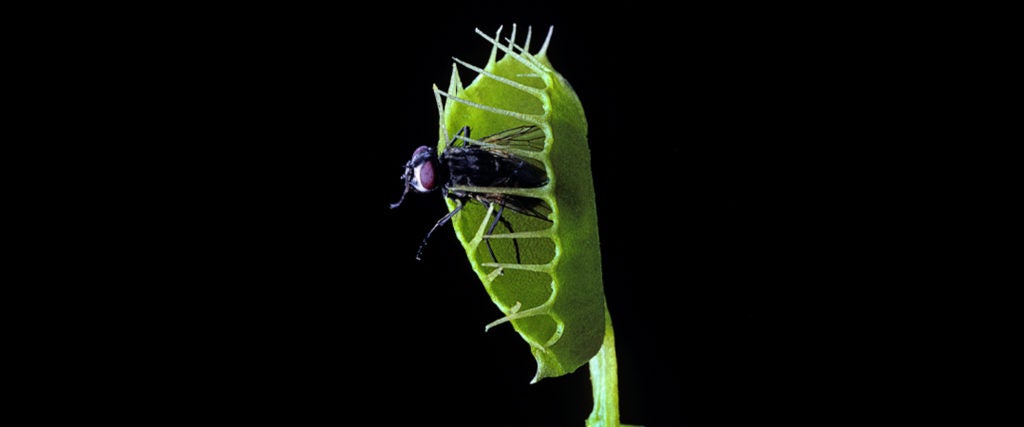Imagine, for a moment, that you’re about to insert your finger, tongue or penis into a vagina. Before you do, though, remember what mothers and priests used to tell little boys: “Careful — women have teeth down there!”
It’s an obvious horror movie trope, but for many people, questions still linger around what’s actually inside the deep, dark cavern of the vagina. A combination of fear and folklore have filled in the blanks for years, and though vaginas should be more afraid of your teeth than you should be of theirs, the story of toothed vaginas and the all-powerful, castrating womxn is still very much alive in the ancient myth of the “vagina dentata.”
The first whisperings of vagina dentata go all the way back to Ancient Greece, but they also show up throughout the Middle Ages, all over Asia and even today in the modern Western world (e.g., it made an appearance in Borat Subsequent Moviefilm when Tutar, after masturbating for the first time, discovers “it has no teeth at all!”). Among the best proof points of vagina dentata through time is the omnipresence of odd-looking chastity belts designed with toothed lips, but it mainly shows up in stories and folkloric writings that position women’s vaginas as in-house self-defense units, ready and able to strike at will.
Often, these tales are told as cautionary lore that warns boys of the dangers of unknown women and discourages the practice of rape. The Yanomami indigenous tribe from the Amazon often told the story of how two brothers were fishing near a piranha-infested part of the river and suddenly saw a beautiful woman approaching. One of the fishermen decided to rape her despite his brother begging him not to, but as he tried to force himself on her, a piranha hiding in the woman’s vagina bit off his dick. The woman then threw his appendage in the water as a feast for her piranha friends.
In Japan, Ainu legend recalls a demon nesting in a young woman’s genitals and castrating an assembly line of her future husbands. The woman finally decided to take the matter in her own hands and crafted an iron phallus to break the demon’s teeth and get rid of it. Meanwhile, in Chile, the indigenous Mapuche have an old saying: “A woman of striking appearance has a biting vagina.”
As far as we know, a pussy can’t actually bite off your dick. But there are efforts to help it try. The most talked-about is an anti-rape device called the Rape-aXe, a “condom” that, when inserted, will literally shred a rapist’s dick with stacks of hook-like teeth that embed themselves into their skin. In addition to giving the wearer time to get away and causing the rapist an excruciating amount of pain, the Rape-aXe could collect and preserve physical evidence of the attack.
Sonnet Ehlers, a retired blood technician in South Africa, came up with the idea in 1967 when she met a rape survivor who told her, “If only I had teeth down there.” Inspired by that story and the obscenely high rape rates in South Africa and beyond, she’s spent the last few decades transforming her idea into a device designed to “give women a stronger chance at escaping sexual assault and bring their attackers to justice.” (It’s still being tested and not yet for sale.)
Another real-world example that might underlie the vagina dentata myth is that teeth can grow anywhere on your body out of a bizarre benign tumor. Such a case was reported in 1989, when the American Journal of Forensic Medicine and Pathology mentioned a dermoid cyst containing teeth growing in the wall of a woman’s vagina. So, in a way, vagina dentata can be real.
Director Mitchell Lichtenstein considered what this would look like with his 2007 vagina dentata reference movie Teeth. The story of a young woman whose toothed pussy selectively bites off the dicks of men who assault her — but not the ones she wants to have sex with — Litchenstein says he made it to match the “gynophobic image” of the original vagina dentata myth. “[Vagina dentata] says very little about women, and quite a lot about men, who presumably invented the myth,” he tells me, explaining that the more he saw it referenced in horror and sci-fi films, the more he got the sense that it was based on nothing more than the male fear of female power. For him, making the film was a way to confront this fear directly, a process he hoped would “neuter its deeper, destructive, gynophobic power.”
That it does — the tongue-in-cheek tone of the movie exposes the preposterousness of the myth, the result of which is a successful diffusion of any fear a toothed vagina might inspire. But is this enough to kill the myth?
Probably not. The backlash against the Rape-aXe may explain why. When it originated in 2005, it was described by a number of people as “vengeful, horrible and disgusting” — as if rape isn’t — and its planned sale in pharmacies was vehemently opposed. Even Charlene Smith, one of South Africa’s leading anti-rape campaigners, called it a “medieval instrument based on male-hating notions.”
The Rape-aXe is far from a perfect device, but Smith’s comments reveal how it’s often the rapist who wins our sympathy, not the victim. And in a world where rapists aren’t only rarely reported but given immunity for their crimes, the vagina dentata is still the bad guy in the scenario, not them.
This unsettling reality, however, doesn’t change the fact that as long as there’s a lack of education and gender equality around the vagina, it will remain a mysterious place. And since mystery begets myth, it’s likely that the fabled vagina dentata will still haunt and emasculate us for years to come.
Maybe in the future, it’ll even have a grill.

